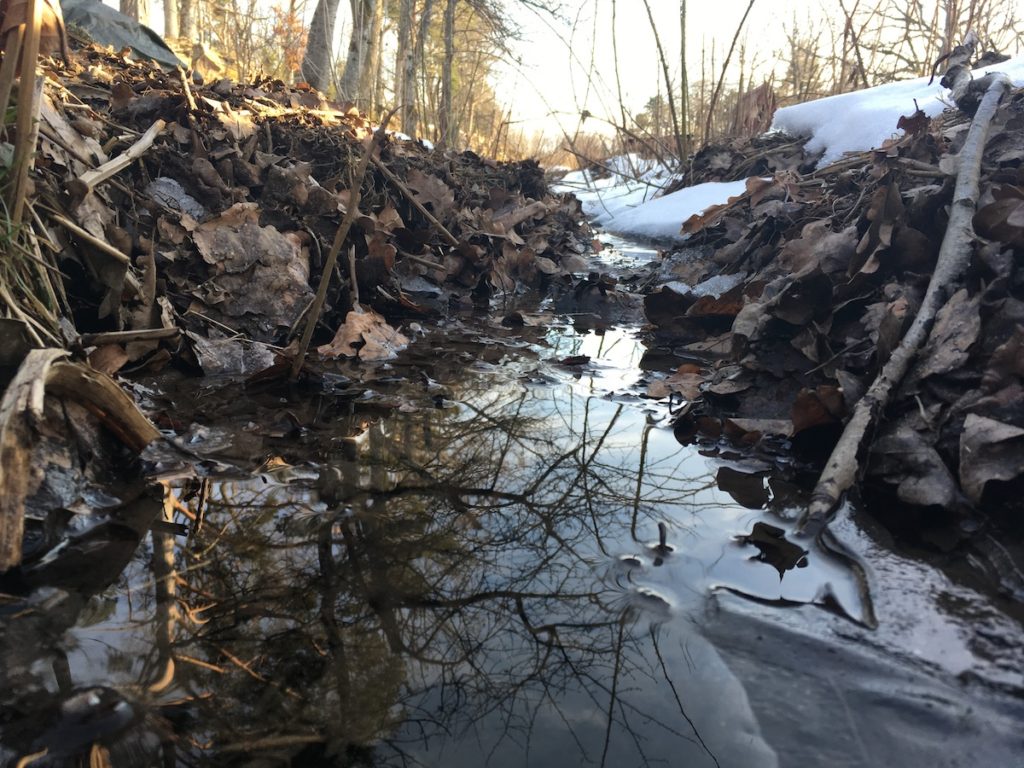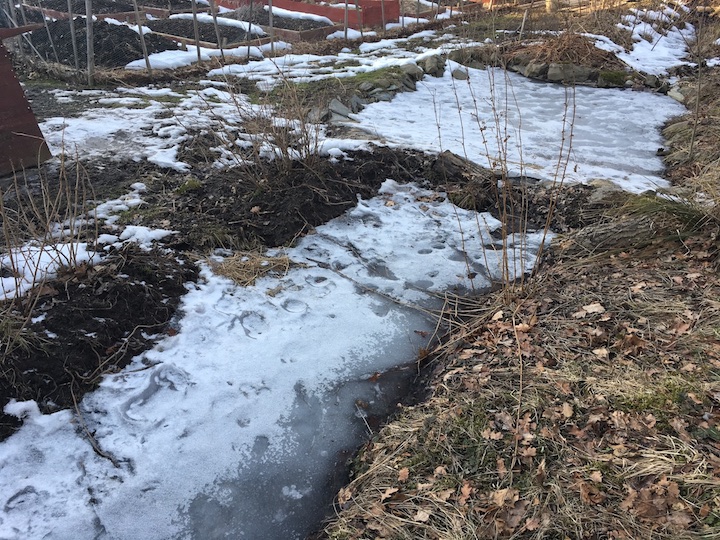News
Snowmelt Harvesting

Ahh yes, Spring is here. It is that time of the year to breathe in the warm air, feel the sunlight, begin to see the colours of the land, and experience the … flooding on the lawn? By now, most of us living in Sweden are well acquainted to the period when the massive melting of snow leads to muddy, waterlogged soil, flooding on the pavements, and dirty, “slushy” residue snow on the sidewalks. Not a particularly pleasant experience – but what if GrowGBG tells you that you can harvest snowmelt, and not only save energy doing it, but also reduce logistical costs on your farm? Read on to find out more!
Snowmelt harvesting – what is it?
Snowmelt harvesting, similar to rainwater harvesting, is the capture and storage of rainwater and snowmelt at the location where it occurs. Snowmelt harvesting can be done on a small-scale; at the level of a single house through a system of sloped roofs and rain gutters, and on a large-scale; at the level of a farm with extensive land area through a system of swales. In Sweden, most of our water resource comes in the Spring while the highest demand for water, which is related to outdoor water use, is in the summer. By capturing and storing runoff from rooftops (and perhaps even sidewalks and other impervious areas), the water can be better managed and used at times of greatest need!
Small-scale snowmelt harvesting
There is no excuse to not harvest rainwater when the simplest rainwater harvesting systems do not even have to include a storage – just a sloped rooftop and a gutter system. Many homeowners already practise this by simply extending downspouts from gutters and directing rain and snowmelt across lawns and gardens.
To achieve a basic system of snowmelt and rainwater harvesting, you will need (and with help from the booklet Rainwater and Snowmelt Harvesting in Colorado by Headwaters Corporation):
- A sloped roof,
- Rain gutters,
- Downspout,
- A filter to keep out or minimize debris such as leaves from clogging your system,
- Optional but preferable: A container for the water – Be creative! Use any type of container you deem fit, such as a trash or barrel.
- A secure container cover to prevent mosquitoes from breeding in the water,
- And lastly, a method to transport water from the container to where you need it: A pail, a hand or mechanical pump, or maybe a gravity-fed hose.
Larger-scale snowmelt harvesting
Swales are an effective way of capturing snow and facilitating rainwater harvesting when the snow melts. The in-situ nature of swales allows water to be used for agricultural purposes directly, thus minimising the need to transport water back and forth across the farm and the costs associated with this. GrowGBG’s Jonathan has attempted his own version of a swale and a mini-rainwater harvesting system in the photo below:
The video by ZOE Farms below explains the use swales on a larger scale, and the measurements/proportions of the swales built to farmland that they have:
Benefits
What are the benefits of rainwater harvesting? In short,
- Rainwater harvesting conveniently provides a source of water supply located close to where the water is needed (for example, runoff from rooftops can be used to irrigate adjacent gardens).
- Plants and crops thrive more with rainwater than treated water.
- The system reduces the flow of rainwater/snowmelt to stormwater drains, and thus reduces erosion and downstream flooding.
- The system reduces stormwater pollution and helps keep fertilizers, pesticides, etc. from being transported to rivers and ground water, thereby improving water quality in urban stream systems.
- Facilitates “green building” on a local scale, where rainwater harvesting systems contribute to stormwater design quantity control, water efficiency, and design innovation.
- Reduces consumer water bills and energy used to treat and deliver water for outdoor uses.
Happy building!
Yours sincerely,
The GrowGBG Team




